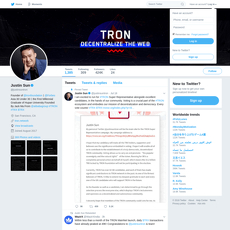Cred Review
Cred
x.com
Cred (CryptoCred) review guide: everything you need to know + FAQ
Are you trying to learn crypto trading without drowning in hype, thumbnail promises, and paid signal groups? Wondering if following CryptoCred can actually make you a better trader — and what to do with all his free material without wasting months?
Here’s the plan: I’ll show you who CryptoCred is, what he teaches (in plain English), how to use his free content step by step, and what results to realistically expect. I’ll also clear up the confusion between CryptoCred the educator and the CRED app or “CRED coins.” My goal is to give you a simple path you can follow today without gambling your account tomorrow.
The problems most crypto learners face
If you’ve felt stuck, you’re not alone. Most people hit the same walls:
- Too many “gurus,” zero structure.YouTube and X are full of conflicting advice. One day it’s “buy breakouts,” the next it’s “fade the rip.” Without a framework, it’s just noise.
- Unrealistic expectations about daily income and leverage. If you’ve ever thought “$100/day” is a switch you can flip, you’ve been sold a fantasy. Even regulated brokers warn that the majority of retail traders lose money — those risk disclaimers (often 70–90%) exist for a reason.
- Paid groups promising certainty. Signals feel comforting, but most don’t publish audited track records, and they rarely teach risk management or process. You end up with screenshots, not skills.
- Confusion between CryptoCred and the CRED app/“CRED coins.” Totally different things. CryptoCred is an educator on X/YouTube. The CRED app is a consumer finance product. This guide clears that up fast so you don’t chase the wrong rabbit.
Short version: the problem isn’t a lack of charts — it’s a lack of a plan you can execute repeatably.
In my inbox, I see the same pattern: smart people, good intentions, but no structure. They collect indicators, jump between timeframes, and measure success by daily PnL instead of whether they followed a plan with positive expectancy. That’s how accounts bleed out — slowly, then suddenly.
What this guide promises
Here’s what you can expect from me — plain, practical, and no fluff:
- A clean overview of CryptoCred’s content, style, and platforms so you know where to start (and what to ignore).
- A simple 4-week study plan to use his material the right way — not binge watch, but build a repeatable routine.
- Realistic expectations around timelines, account size, and results — with a focus on consistency and risk, not daily income targets.
- A straight FAQ that answers the most common questions: “Can I make $100/day?”, “Is CryptoCred the same as the CRED app?”, “Can I cash out CRED coins?”, and more.
By the end, you’ll have a clear roadmap: what to study, how to practice, and how to measure progress properly (think R-multiples and journal data, not lucky screenshots).
Why listen to me + quick disclaimer
- I run Cryptolinks.com. I spend my days testing crypto tools, educators, exchanges, and resources — and I see what actually helps people improve.
- I don’t sell signals. No copy-trading, no “VIP” rooms. This is a practical review designed to help you learn safely and avoid expensive mistakes.
- Not financial advice. Trading involves risk. Your results will come down to your preparation, risk control, and discipline. If you skip the boring parts (journaling, rules, reviews), the market will remind you why they matter.
If you’re tired of jumping from thread to thread and just want a clear way to study, practice, and track improvement, you’re in the right place. Next up, I’ll answer the big question you probably have:
Who exactly is CryptoCred and what does he actually offer — free vs paid, platforms, and style? Let’s sort that out so you can start strong and skip months of guesswork.
Who is CryptoCred and what does he actually offer?
When people message me asking, “Whose content actually helps you trade better?” I point them to CryptoCred. He’s known across X and YouTube for straight, no-hype education that prioritizes process over predictions. No dopamine-fueled calls. No magic indicators. Just clean frameworks you can actually apply.
“Process beats prediction. Every. Single. Time.”
That’s the vibe: clear charts, clear levels, clear invalidation. He doesn’t try to be right on every move; he wants you to be consistent over many moves. If you’ve ever felt stuck between flashy YouTube thumbnails and paid groups promising certainty, his approach is a breath of fresh air.
Teaching style and philosophy
He teaches technical trading the way serious practitioners do it: identify context, define your risk, take repeatable setups, and track your results. You’ll see:
- Price action first: support/resistance, trend, and market structure across timeframes.
- Risk management baked in: position sizing, stop placement, and invalidation before any entry.
- Rules over FOMO: “If X happens, I do Y; if not, I wait.” No chasing candles.
- Journaling and iteration: treat trading like a craft—log, review, improve.
What does this look like in practice? A typical Cred-style plan might read:
- Context: BTC is in a weekly range between 59.5k support and 64.2k resistance.
- Plan A (long): If price reclaims 64.2k on a daily close and retests it as support, I’ll enter with a stop below 63.5k and target prior highs. Invalidation: daily close back inside the range.
- Plan B (short): If price fails at 64.2k and loses the daily mid-range, I’ll short a retest with a stop above the failure wick. Invalidation: close back above the level.
- Do nothing: If neither condition triggers, I wait. No trigger, no trade.
That “if-then-else” structure is not sexy, but it’s how you reduce randomness. Behavioral science backs this up: checklists and pre-commitment reduce decision noise in complex environments (see Noice by Kahneman, Sibony, and Sunstein), and structured checklists have slashed errors in other high-stakes fields too (Gawande’s research in medicine is a classic example). The point: rules beat vibes.
“Trade the plan, not the hope.”
If you’ve been burned by impulsive entries, this style feels like someone turning the lights on.
Where you’ll find his content
- X (Twitter): @CryptoCred for clean charts, level maps, quick threads, and reminders about process. Expect specifics like “reclaim/lose this level → plan changes.”
- YouTube lessons: Long-form, evergreen lectures on core TA concepts—market structure, trend, and level-based trading—designed so you can pause, apply, and rewatch.
- Structured notes/PDFs: Organized material you can print, highlight, and turn into your own playbook. These are the “study guide” version of his lectures.
- Technical Roundup (with DonAlt): A recurring market show that focuses on education and context. It’s not a signal factory; it’s a look at what matters and why.
- Occasional livestreams/market reviews: The goal is always to teach you how to think, not to spoon-feed entries.
One pattern you’ll notice: the same principles appear everywhere. The X threads map levels you’ll later see expanded in a video. The notes become your checklist. It all adds up to a repeatable routine—exactly what newer traders usually lack.
Free vs paid and what he doesn’t do
- Core material is free. You don’t need to buy a secret course to access the fundamentals.
- No signals, no copy-trading, no “one weird indicator.” If you want a shortcut, this isn’t it.
- No cult of personality. The content is about frameworks and execution, not hero trades.
- No token, no app, no gimmicks. He’s an educator. If you’re seeing coins or cashback schemes, that’s a different brand entirely.
If you’ve ever thought, “Just tell me where to buy,” you’ll be nudged to a better question: “What’s my setup, what invalidates it, and how do I size it?” That shift is where most people start to see progress.
So what will you actually learn—step by step—and how do you turn his material into trades you can journal and review? Up next, I’ll break down the exact skills you’ll pick up, the mistakes you’ll stop making, and the simple structure to move from guessing to a real plan. Ready to see what that looks like on your chart tomorrow morning?
What you’ll actually learn from his material
Let’s cut straight to it: the real value here is learning to stop guessing. You’ll trade because a setup is present, not because a candle just turned green. That shift—from impulse to process—is the entire game.
“Plan the trade, trade the plan.”
Here’s how that looks on an actual chart and in your decision-making.
Technical analysis that matters
Forget magic indicators. The backbone is clean, transferable concepts: levels, structure, trend, and context. Use them to spot high-probability areas instead of chasing the middle of nowhere.
- Levels: Mark weekly/daily support and resistance. If price reclaims a lost level (closes back above), that’s often your cue to look for a retest long; if it rejects, a short setup is on the table.
- Market structure: Higher highs/higher lows = uptrend; lower highs/lower lows = downtrend. If structure is up on the daily and you’re shorting every 15-minute red candle, you’re fighting the tape.
- Breakouts and fakeouts: True breakouts show acceptance (closes and follow-through). Fakeouts leave wicks and quickly return back inside the range. You’ll learn to spot swing failure patterns (SFPs)—where price runs a prior high/low, takes liquidity, and closes back inside—often a high-quality reversal signal with tight invalidation.
- Multi-timeframe context: Build the map on the higher timeframe (weekly/daily), find the setup on 4H/1H, time entries on 15M only if it serves the higher-timeframe idea. Top-down keeps you from trading noise.
Example you can replicate: Let’s say BTC is stuck between a weekly resistance at 30,000 and support at 25,000. Price pokes above 30,000, wicks, and closes back below on the daily—classic failed breakout. The plan: look for a 1H lower high under 30,000 to short, invalidation above the wick high, target mid-range (around 27,500) or the opposite boundary (25,000). Risk is clearly defined; context is on your side.
That’s the pattern: map the big levels, wait for acceptance or failure, then refine the entry. Boring? Yes. Effective? Also yes.
Risk management and psychology
If you’ve ever blown up after a “sure thing,” welcome to the club. The way out isn’t a better indicator; it’s better risk. You’ll learn simple rules that keep you in the game long enough to actually get good.
- Position sizing: Decide your risk per trade first (many use 0.5%–1% of account). Position size = (account risk) divided by (entry-to-stop distance). Example: $10,000 account, risk 1% = $100. If your stop is 2% away, size is $5,000 notional. Use leverage to reach notional if needed, but your max loss stays $100.
- Stop placement: Stops go beyond invalidation, not “where it feels safe.” If an SFP short is invalidated when price makes a new high above the wick, that’s where the stop goes—full stop.
- Risk/reward: Aim for asymmetric trades (at least 2R where possible). Two good trades can pay for a handful of small, controlled losses.
- Avoiding death-by-leverage: Leverage changes notional, not edge. If the setup is bad, 10x just makes it worse—faster.
On the psychology side, the pitfalls are well documented. Barber and Odean’s research on retail behavior found that frequent trading and overconfidence tend to crush returns (SSRN). Prospect theory shows we’re wired to cut winners early and hold losers too long (Wikipedia). A structured process beats your instincts.
“Your job isn’t to predict. Your job is to manage risk.”
Trade planning and journaling
Winging it is a plan—just a terrible one. You’ll pick up a simple pre-trade checklist and a journal flow that turns charts into data you can act on.
Pre-trade checklist (copy this):
- What’s the higher-timeframe bias (trend/structure)?
- Which key level am I trading around?
- What’s the exact setup (e.g., SFP, breakout-retest, trend pullback)?
- Entry trigger (close, wick reclaim, limit at retest)?
- Invalidation level and stop distance?
- Risk per trade (R) and minimum target (R multiple)?
- What would immediately tell me this idea is wrong?
Journaling template:
- Pair and timeframe
- Screenshot before and after
- Setup type and thesis (1–2 sentences)
- Entry, stop, target, R planned vs. R achieved
- Emotions and rule adherence (yes/no)
- Single lesson to carry forward
When you review, calculate expectancy so you know if the setup actually makes money: Expectancy (in R) = (Win rate × Average win R) − ((1 − Win rate) × Average loss R). Example: Win rate 45%, average win 2.5R, average loss 1R → 0.45×2.5 − 0.55×1 = 0.575R per trade. That’s edge. Van Tharp popularized R-multiples for exactly this reason—your system becomes measurable, not mystical.
One more trick borrowed from checklists research in other high-stakes fields: written checklists reduce errors. Atul Gawande’s work in medicine showed significant drops in complications after simple checklists were adopted; traders are not special snowflakes—checklists help here too.
Building your own system
Here’s where it all sticks. Instead of trying everything, you’ll write a small playbook and trade it until it’s boring. Boring makes money.
- Pick 1–2 core setups: For example, a) HTF range SFP at boundary, b) Breakout-retest with acceptance on the daily.
- Define them in writing: Context filters (trend, volatility), valid triggers (close vs. wick reclaim), stop placement, targets, and trade management rules (move to breakeven after X).
- Non-conditions: If A + B + C aren’t present, there is no trade. No “but it looks good.”
- Know your no-trade zones: Middle of the range, right into higher-timeframe levels, or during key news events unless your data supports it.
- Scope control: Limit pairs and timeframes. Many find BTC/ETH plus 1–2 alts and 4H/1H execution keeps noise low and signals clean.
Think of it like this: the playbook protects you from you. In volatile markets, the person who follows rules wins by default because everyone else breaks them when it counts.
Quick gut-check: Do you want an exact, step-by-step way to put this into practice without getting overwhelmed? In the next section I’ll lay out a simple 4-week plan—with chart homework, checklists, and a journal template—you can start today. Ready to make it actionable?
A simple 4-week study plan to get real value
You don’t need a thousand tabs open to learn. You need a plan you can actually follow. Here’s a simple, practical 4-week path to use CryptoCred’s material the right way, build real skills, and calm the noise. It’s designed to fit around a normal life and still move the needle.
“You do not rise to the level of your goals. You fall to the level of your systems.” — James Clear
Week 1: Foundation
Goal: set the ground rules, your timeframes, and your risk. No live trades this week—just structure.
- Read his core notes/PDF and pin the basics. Focus on levels (support/resistance), trend, market structure, invalidation, and risk. Keep a one-page summary you can glance at before any chart work.
- Pick your main timeframes. If you have a day job, use 1D/4H. If you have more screen time, try 4H/1H. Everything else is noise for now.
- Choose simple tools.TradingView works. Use horizontal levels, a 200 MA if you like, nothing exotic. Keep your chart clean.
- Set basic risk rules. Choose a fixed R per trade and stick to it. For learners, I like 0.5% of equity per trade (max 1%). That’s your 1R.
Position sizing example:
- Account: $1,000
- Risk (1R): 0.5% = $5
- Planned stop distance: 1.2% from entry
- Position size = $5 / 0.012 = $416 notional (if you use leverage, keep it conservative)
End-of-week output: a one-pager with your timeframes, a minimal toolset, and written risk rules (1R size, max daily loss, no revenge trading). Pin it next to your screen.
Week 2: Chart “homework”
Goal: practice reading context and planning trades before price moves. You’re training your eye and your patience.
- Mark levels on five markets: BTC, ETH, plus any 3 alts you actually watch (e.g., SOL, LINK, ARB). Do it on the higher timeframe you chose in Week 1.
- Write “if–then” scenarios. For each chart, produce a pre-trade plan and screenshot it.
- BTC 4H example: If price closes above 64,200 and then retests that level as support with a higher low, then I’ll look for a long with stop below the retest low. If it fails and closes back below, no trade.
- ETH 1D example: If price rejects 1,950 for the third time and makes a lower high, I’ll plan a short back to the mid-range 1,860 with a stop above the lower high. If daily structure flips bullish, plan invalidated.
- Use Replay mode for practice. On TradingView, hide the right edge, “advance” candle-by-candle, and follow your plan. No live orders yet—just reps.
- Create a pre-trade checklist. Quick, 6–8 yes/no items:
- Is the level from a higher timeframe?
- Is market structure aligned with the setup?
- Is my invalidation clear on the chart?
- Is the R multiple ≥ 2R?
- Is correlation risk acceptable? (not long BTC + long SOL if both move together)
- Have I written the if–then in my notes?
Why checklists? In high-stress environments, checklists reduce error. In a well-known NEJM study, a surgical checklist cut complications by 36% and deaths by 47% (NEJM, 2009). Different field, same brain—structured steps = fewer mistakes.
End-of-week output: 5 charts with levels + if–then plans, 10–15 screenshots, and a checklist you’ll run before any trade.
Week 3: Journal and backtest
Goal: validate one setup with data and start tracking your behavior. This is where your edge starts to show up (or not).
- Pick one setup. Example: “4H SR flip + retest” or “1D range breakout with close and retest.” Stick to a single, clear pattern.
- Backtest 20–30 trades from the past. Use Replay mode. For each sample, log:
- Ticker, date, timeframe
- Entry, stop, target(s)
- R multiple (win/loss in R)
- Screenshot and 1–2 lines on the thesis
- Calculate simple expectancy. Expectancy ≈ (Win% × Avg win R) − (Loss% × 1R).
- Example from a real learner: Win rate 38%, avg winner 2.6R → 0.38 × 2.6 − 0.62 × 1 = +0.36R/trade. That’s promising if it holds in forward testing.
- Start a simple journal (keep it lightweight).
- Setup name
- Trigger and invalidation
- Entry, stop, target(s), size
- Emotional state (1–5) + one sentence why
- Outcome in R + lesson learned
- Run a “premortem.” Before you take your next live trade, write how it could fail and what you’d do (HBR: Gary Klein). It preloads your brain to follow the plan under stress.
End-of-week output: a 20–30 trade backtest for one setup, a journal template, and a basic expectancy number. If expectancy is negative, that’s good data—adjust rules and retest.
Week 4: Build your playbook
Goal: turn scattered notes into a tight playbook of 1–2 setups, with triggers, invalidations, and rules you can execute without second-guessing.
- Lock in 1–2 core setups. Give each a one-page spec:
- Context: market structure required (trend, range, HTF bias)
- Trigger: candle close, retest behavior, wick rule
- Invalidation: precise level that kills the idea
- Targets: partial at 1R/2R, final at prior HTF level
- Filters: no trade into HTF resistance; avoid major news window
- Examples: 3–5 labeled screenshots (wins and losses)
- Define a daily/weekly routine.
- Daily (15–25 min): update levels, run checklist, write if–then for top 3 charts
- Weekly (45–60 min): review journal, tag non-core trades, calculate weekly R, archive screenshots
- Cut non-core trades. Add a journal tag “non-core.” Any trade with that tag is a rule break. Two tags in a week? Step back to sim the next day.
- Set personal circuit breakers.
- Hit −3R in a day or break 2 rules? Reduce risk by 50% and stop for 24 hours.
- Three green days in a row? Do not increase size yet. Keep it boring.
End-of-week output: a two-page playbook, a daily routine you can actually follow, and a set of circuit breakers to protect your equity and your headspace.
Ongoing maintenance
This is where consistency compounds.
- Weekly review: update levels, export journal to see win rate, avg R, and which setup underperforms. Keep or tweak rules only if the data supports it.
- Add size slowly: after 30–50 live trades with positive expectancy and rule compliance ≥ 90%, bump risk from 0.5% to 0.75%. Hold for another 30–50 trades before considering 1%.
- Watch correlation risk: if BTC triggers your long setup, think twice before taking the same setup on 3 correlated alts. One thesis, one main position, maybe one small satellite.
- Run a simple Monte Carlo check: randomize the order of your last 50 trades (just shuffle R values in a sheet) to see typical drawdowns. If your plan can’t stomach the worst case, your size is too big.
- Keep it human: note sleep, stress, and distractions in your journal. Patterns show up. Bad sleep often equals bad trades.
One more thing: it’s normal to feel impatient when you “only” bank process wins at first. That calm you feel when a trade stops you out and you shrug—that’s progress. That’s the edge you’re building.
So what does a realistic outcome look like after a month on this plan—and how does that tie into the whole “$100/day from crypto” question you keep seeing? Keep reading; I’ll show you the math, the timelines, and the traps to avoid next.
Results, expectations, and common myths
If you clicked this to find a magic number or a shortcut, I’ll stop you right here. Trading is a skill game with uncertainty built in. The right expectations protect your capital and your sanity, and they make CryptoCred’s process-driven approach actually work for you.
“The stock market is a device for transferring money from the impatient to the patient.” — Warren Buffett
Can you make $100/day from crypto?
Yes, it’s possible. No, it’s not guaranteed. And trying to force a daily paycheck from a market that doesn’t pay on schedule is how accounts get wrecked.
Here’s the clean math most people skip:
- If you risk 1% per trade and your average day produces 0.5R (a realistic target for a disciplined swing/low-frequency intraday trader), that’s 0.5% of your account per day on average.
- To make $100/day at 0.5% per day, you’d need about a $20,000 account. If your average is 0.25R/day, think $40,000.
- With a $1,000 account, targeting $100/day means aiming for 10% per day. That’s gambling, not trading.
Expect uneven payouts. A strong week might deliver +5R. The next week might be flat or negative. Successful traders focus on R-multiples and weekly/monthly outcomes, not a daily salary. Pushing for daily income almost always leads to overtrading, revenge trading, and compounding losses—exactly what process-first educators warn against.
There’s data to back the caution. In their well-known research, Barber and Odean found that overtrading destroys returns. And the Brazilian regulator’s study on day trading showed the vast majority underperform. Chasing daily targets is a big reason why.
Takeaway: Build consistency in R first. The dollars scale with account size once your data proves you have an edge.
Account size math and realistic returns
The market pays those who can survive long enough for their edge to show up. That edge is just expectancy:
Expectancy (E) = Win rate × Average win (R) − Loss rate × Average loss (R)
- Example: 45% win rate, average win = 2R, average loss = 1R → E = 0.45×2 − 0.55×1 = 0.35R per trade.
- If you take 3 quality trades per week, that’s ~0.9–1.0R/week on average. With 1% risk, that’s ~1%/week before fees and slippage.
Now the part almost no one accounts for:
- Fees and slippage matter. If your round-trip cost is 0.06–0.10% and you scalp 10 times a day, your edge can vanish even if your ideas are good.
- Funding and overnight costs on perps add up. They’re tiny per hour, brutal over months if you’re sloppy.
- Small accounts should optimize for skill growth, not income. Hunt for clean A+ setups on BTC/ETH, log them, and let your R grow. The dollars come when you’ve earned the right to size up.
What’s “realistic”? It’s personal and it varies. Some disciplined retail traders see a few R per month, some have flat months, a few outperform during trending environments, and everyone takes drawdowns. Anyone promising fixed daily income from trading is selling a fantasy.
Spot vs leverage and risk of ruin
Leverage is a tool. It amplifies both skill and mistakes. If you’re using it to “force” returns, you’re already off track.
- Spot: Slower, simpler, less chance of instant liquidation. Great for learning execution and risk without the constant threat of blowing up.
- Leverage: A 1% move at 10x is a 10% PnL swing; at 50x, ordinary noise can liquidate you. It’s not an edge—it’s a multiplier.
Think in risk-of-ruin terms. If you risk too much per trade, a normal losing streak can wipe you out—even with a good system. For most learners, 0.25%–1% risk per trade with a daily stop (e.g., −2R) and a weekly stop (e.g., −5R) is a survivable framework. If your journal shows a stable edge, you can scale slowly. If it doesn’t, leverage won’t fix that; it’ll expose it faster.
Good guardrails I actually use:
- Pre-defined invalidation on every trade. If price hits it, you’re wrong. Exit.
- No martingale. Never add size just to lower your average.
- Trade fewer pairs. Fewer markets means cleaner reads and less noise.
- Time-out rules. Two emotional trades in a row? Step away.
Who shouldn’t trade full-time
Full-time sounds glamorous until you live through a multi-week chop, three failed breakouts, and a −6R drawdown while bills keep coming. Some blunt truths:
- If you won’t journal and review, this path will be expensive.
- If you can’t stick to rules when markets get loud, your edge won’t survive.
- If variance makes you panic, you’ll cut winners and ride losers—edge gone.
Before even thinking “full-time,” I’d want to see:
- 12 months of living expenses saved outside your trading account.
- 200+ logged trades with a positive expectancy and a drawdown profile you can stomach.
- Clear playbook with 1–2 core setups you actually trade, not 10 you admire.
- Alternative income or part-time work while your edge proves itself across different market regimes.
There’s nothing wrong with keeping trading part-time and compounding slowly. In fact, many of the most consistent retail traders I know did exactly that until their data—not their dreams—said it was time to size up.
Quick reality check backed by data: the Brazilian securities regulator found that only a tiny fraction of day traders achieved consistent profits over time. Survive first. Prove your edge. Then decide how big this should be in your life.
Still wondering if $100/day is realistic for your account size—or confused about the whole “CRED” thing you keep seeing online? I’ll answer those head-on in the next section with quick, no-BS bullets you can screenshot. Ready?
FAQ: CryptoCred vs CRED app, $100/day, and other common questions
Can I make $100 a day from crypto?
Short answer: yes, some traders do—but setting a daily income target is one of the fastest ways to blow up your account. Focus on your edge and R-multiples first.
Here’s a quick reality check with simple math:
- Account $5,000, risk 1% per trade (=$50 per R): To average $100/day, you’d need ~2R per day, every day. That’s extremely aggressive because quality setups aren’t daily.
- Account $10,000, risk 1% per trade (=$100 per R): $100/day means 1R per day, or ~20R in a 20-trading-day month. Many competent traders target ~5–10R a month. 20R is elite-level consistency.
What actual research says: multiple studies on day trading show that only a small minority are consistently profitable after costs. For example, research on a large sample of day traders in Taiwan found that most traders underperform, and a tiny top tier captures the majority of profits. The big takeaway is not “it’s impossible,” but that skill, risk control, and process matter far more than daily dollar goals.
If you must have a number, make it process-based: aim for consistency in following your rules and let income be a byproduct. Track your average R, win rate, and sample size (20–40 trades) before thinking about daily income.
Is CryptoCred the same as the CRED app or “CRED coins”?
No, they are completely different.
- CryptoCred is an educator sharing free trading lessons on X and YouTube. He focuses on process, risk, and repeatable setups.
- CRED app is a consumer finance app (popular in India) that rewards timely credit card bill payments. It has nothing to do with CryptoCred’s trading education.
Watch out for impersonators. If someone claims to be CryptoCred and pushes a “CRED coin,” a paid group, or copy-trading, that’s a red flag. Always verify the handle on X and his YouTube channel before trusting anything.
Can I convert “CRED coins” to cash?
Those are loyalty points inside the CRED app ecosystem—unrelated to CryptoCred. Typically, they’re redeemed for discounts, offers, or app-specific cashback. They are not a blockchain asset or a cryptocurrency you can send to an exchange. If someone tells you to “swap CRED coins for USDT,” it’s almost certainly a scam.
Always check the CRED app’s terms for the latest redemption rules, and never send funds to “unlock” rewards.
Is it worth using the CRED app?
It depends on your location and habits. If you’re in India, already pay your card bills on time, and like redeeming rewards, it might make sense. But it’s unrelated to trading and won’t teach you technical analysis or risk management. Keep the two topics separate so you don’t mix a payments app with a trading education resource.
- If you’re here to learn trading, stick to CryptoCred’s channels and your study plan.
- Never sign up for any “CRED coin investment” or “special trading group” promoted in DMs—common scam pattern.
Does CryptoCred give signals or run paid groups?
No. He does not sell signals, copy-trading, or “secret indicators.” His core content is free and focused on teaching you to think and execute for yourself.
- Real profiles: X (Twitter), YouTube, and the weekly show/newsletter with DonAlt (Technical Roundup).
- If you see a “premium VIP” group under his name, assume it’s fake until proven otherwise. Legit accounts don’t cold-DM you for cash.
What’s the best way to start with his content?
I keep it simple:
- Skim his pinned threads and foundational material on X.
- Watch a few core YouTube lessons on price action, support/resistance, and risk management.
- Then follow the 4-week plan I outlined earlier: build your checklist, practice if-then scenarios, backtest one setup, and write your playbook.
Don’t binge-watch. Learn one concept, apply it on charts, journal the reps, and only then move on.
How long until I see results?
Think in months, not days. A realistic arc many people experience:
- Month 1–2: Learn core concepts, define risk rules, start marking levels and practicing entries/exits on screenshots or very small size.
- Month 3–6: One or two core setups, 20–40 logged trades, cleaner execution, fewer impulse trades. You’ll start to see whether your average R and win rate justify your approach.
- Beyond 6 months: Tighten rules, remove non-core trades, consider scaling size slowly only if your journal and stats are stable.
Regulators and investor protection bodies consistently warn that day trading is high risk and most participants lose money. That’s exactly why the process-first approach matters. Measure what you can control:
- Adherence rate: % of trades that followed your checklist.
- Average R: Are you cutting losers and letting winners reach your planned targets?
- Sample size: At least 20–40 trades per setup before judging performance.
“Make $100/day” is an outcome. Your edge is your inputs—rules, risk, and repeatability. Fix those first; the money follows.
Still wondering whether following CryptoCred is actually worth your time—and who benefits the most from his style? Keep reading, because next I’ll share the no-fluff pros, cons, and my straight answer on who should (and shouldn’t) follow him.
Should you follow CryptoCred? My verdict
If you asked me which single free educator I’d bet a beginner’s first 30 days on, I’d say CryptoCred. Not because he’s flashy, but because he’s consistent about one thing most people skip: building a repeatable process that survives bad days as well as good ones.
I keep hearing a similar pattern from readers: they binge random YouTube calls, overtrade, and then feel “unlucky.” After a month of using a simple 1R risk rule, marking levels, and journaling the way Cred teaches, they’re not instantly rich—but the bleeding stops. That shift from random outcomes to controlled outcomes is the difference between quitting in six months and having a real shot.
“Edge = positive expectancy + risk control + execution. Lose any one, and the math won’t save you.”
The approach checks out with what research has told us for years. Overtrading devastates results—Barber and Odean famously showed that the most active traders tended to underperform significantly. Structured journaling and process goals, on the other hand, improve performance and decision quality in high-variance fields—trading included (see Brett Steenbarger’s work on trading journals). Position sizing is the lever that keeps you in the game long enough to learn—Van Tharp’s position-sizing framework is a classic for a reason.
CryptoCred aligns with all of that. No magic indicator. No “this will definitely pump.” Just levels, structure, invalidation, and rules—then the discipline to do it again tomorrow.
Pros and cons at a glance
- Pros — Clear frameworks: Simple, structured ways to mark levels, map trend, and define invalidation. It cuts the noise, especially for people who’ve been guessing entries off random candles.
- Pros — No hype, no signals: He teaches the why and how of trades rather than spoon-feeding calls. That’s a huge plus if you want independence.
- Pros — Risk-first culture: R-based thinking (risk per trade, average R, max drawdown) is emphasized. That’s the only path I’ve seen survive real volatility.
- Pros — Free, high-quality material: Notes, videos, and market reviews that don’t feel like upsells. You can get far without spending a cent.
- Pros — Journaling and review baked in: Templates and routines that nudge you to measure what matters, not just watch more content.
- Cons — No shortcuts: If you want “buy now/sell now” messages, you won’t get them. You’re the one pressing the buttons.
- Cons — Self-study required: You’ll need to carve out time, rewatch lessons, and actually journal. Skimmers won’t see the benefit.
- Cons — Patience is mandatory: Results come from repetition over weeks and months. If you chase action every hour, you’ll struggle with his pace.
- Cons — Not tailored to hyper-scalping: The material shines for swing and structured intraday trading. Pure scalp junkies might want more niche resources.
Who will get the most value
I’ve seen the biggest wins (and the lowest stress) from people who match at least a few of these:
- New or stuck traders who want structure and are willing to follow a simple, written playbook instead of chasing the next hot chart.
- Part-time traders with 60–90 minutes on most weekdays to mark levels, plan “if-then” scenarios, and journal. You don’t need eight screens—just a routine.
- Anyone burned by leverage who’s ready to reset with small risk and clear invalidation. The step back now saves months of pain later.
- Process-minded learners who are fine with boring but consistent rules and care more about expectancy than fireworks.
Ask yourself a few quick questions:
- Am I willing to risk a fixed amount per trade and stop revenge trading?
- Will I journal entries, stops, targets, and a one-sentence thesis—every time?
- Can I sit out when my setup isn’t there, even if X is pumping on the timeline?
If the answer’s yes to those, you’ll likely click with Cred’s style.
Final word
Follow CryptoCred if you want to build real trading skills and make fewer avoidable mistakes. That’s the honest pitch. It’s not about certainty; it’s about stacking small edges and protecting the downside so variance doesn’t wipe you out.
Here’s the move I recommend:
- Bookmark his notes and commit to 30 focused days. No multitasking, no alt-tab news binges.
- Pick 1–2 core setups you understand and ignore everything else for a month.
- Risk small (fixed R), journal every trade, and run a weekly review to tighten rules based on data.
Do that, and you’ll be ahead of most traders who bounce from call to call. If you want a place to start, check his X account for current charts and threads: https://x.com/CryptoCred. Stick to process over predictions, and let your journal prove whether your edge is real.
My verdict: strong yes—for anyone serious about learning to trade for themselves.
CryptoLinks.com does not endorse, promote, or associate with Twitter accounts that offer or imply unrealistic returns through potentially unethical practices. Our mission remains to guide the community toward safe, informed, and ethical participation in the cryptocurrency space. We urge our readers and the wider crypto community to remain vigilant, to conduct thorough research, and to always consider the broader implications of their investment choices.













